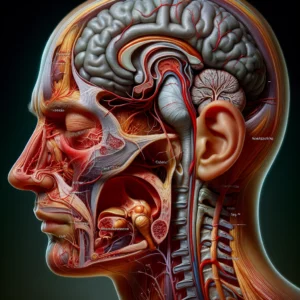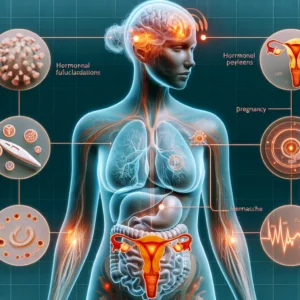Essential Insights into Headache Causes and Proven Management Techniques
Headaches represent a widespread health issue that impacts millions of individuals, often hindering daily activities and reducing overall productivity. These distressing episodes can manifest in various forms, each with unique triggers and symptoms that require tailored approaches for relief. To effectively manage headaches, it is crucial to comprehend the different types of headaches, their origins, and how they present. This understanding empowers individuals to customize their treatment strategies, leading to a more effective and personalized approach to tackling this common health problem.
Whether you deal with sporadic headaches or persistent chronic pain, pinpointing the underlying causes is essential for choosing the right treatments and implementing beneficial lifestyle changes. As you delve into headache management options, explore a broad spectrum of treatments that encompass both traditional and alternative methods. Techniques such as balanced acupuncture, neurological acupuncture, and manual therapy can effectively target the root causes of pain, facilitating a journey towards regaining control of your health and enhancing your overall well-being.
By examining these diverse treatment modalities, you can embark on a comprehensive journey focused on alleviating headaches while simultaneously nurturing your overall health and wellness.
Proven Strategies for Successful Headache Management
- Tension headaches are the most prevalent form of headaches, characterized by a constant band-like pressure around the head that often intensifies during stressful situations.
- Migraine headaches are marked by severe, pulsating pain typically localized to one side of the head, often accompanied by nausea, vomiting, and heightened sensitivity to both light and sound, significantly disrupting daily routines.
- Cluster headaches are notorious for their excruciating pain, occurring in cyclical patterns and often concentrated around one eye, ranking as one of the most intensely painful types of headaches.
- Sinus headaches are associated with sinusitis and can cause pressure and pain in the forehead, cheeks, and nasal areas, frequently worsened by allergies or infections.
- Hormonal headaches predominantly affect women and are linked to fluctuations in hormone levels, commonly occurring during menstruation, pregnancy, or menopause, necessitating tailored management strategies.
 In-Depth Exploration of Tension Headaches and Their Triggers
In-Depth Exploration of Tension Headaches and Their Triggers
Recognizing Common Patterns and Triggers Linked to Tension Headaches
By reflecting on your personal experiences with headaches, you can pinpoint specific patterns or triggers that may lead to tension headaches. Factors such as extended periods spent working at a desk, emotional stress, and inadequate ergonomic setups can significantly contribute to the onset of these headaches. Identifying these triggers is crucial for preventing future occurrences and protecting your overall health. Common contributors include work-related stress, insufficient sleep, and even dehydration, all of which can exacerbate your discomfort. Maintaining a meticulous headache diary can assist in tracking the timing and underlying causes of these headaches, empowering you to take proactive measures to minimize their impact on your daily life.
Implementing a Holistic Approach for Effective Tension Headache Relief
An effective strategy for alleviating tension headaches often requires a multifaceted approach. Integrating therapies like balanced acupuncture can help restore energy flow within your body by targeting specific acupoints that may be responsible for muscle tightness and stress. Moreover, incorporating relaxation techniques such as deep breathing exercises or yoga can significantly diminish tension while enhancing your overall well-being. By addressing both the physical and emotional stressors through a holistic approach, you can markedly reduce the frequency and intensity of tension headaches, ultimately improving your overall quality of life.
Enhancing Relief Through Neurological Acupuncture and Manual Therapy Techniques
Neurological acupuncture can further augment your relief efforts by focusing on the nervous system’s role in pain perception. This specialized technique zeroes in on the pathways involved in headache formation, potentially altering your brain’s response to pain signals. When complemented with manual therapy methods, such as massage or myofascial release, you may experience substantial relief from the tension that often exacerbates your headaches. Together, these therapies create a synergistic effect, alleviating pain while promoting lasting relaxation and improved well-being.
 Thorough Overview of Migraine Headaches and Their Effective Management
Thorough Overview of Migraine Headaches and Their Effective Management
Migraines are much more than just severe headaches; they represent complex neurological events that can incapacitate individuals for hours or even days. Characterized by debilitating, throbbing pain typically felt on one side of the head, migraines often come with additional symptoms such as nausea, vomiting, and heightened sensitivity to light and sound. Various triggers—ranging from specific food items to hormonal changes and environmental factors—can initiate these debilitating episodes, highlighting the importance of identifying and managing these triggers for effective treatment.
Successful management of migraines generally requires a comprehensive approach. While medications may offer immediate relief during an attack, integrating therapies like acupuncture can significantly diminish the frequency and intensity of future episodes. Neurological acupuncture specifically targets the pain pathways associated with migraines, potentially altering your brain’s response to pain stimuli and disrupting the cycle of recurrent attacks.
When paired with manual therapy techniques aimed at relieving muscle tension and enhancing blood circulation, you may uncover a more holistic strategy for effectively managing migraine headaches, enabling you to reclaim your daily life from the grip of these distressing episodes.
Detailed Examination of Cluster Headaches: Patterns, Triggers, and Severity
| Metrics | Data |
|---|---|
| Prevalence | 1 in 1,000 adults |
| Age of onset | 20-40 years old |
| Duration of attacks | 15 minutes to 3 hours |
| Pain intensity | Severe, often described as the worst pain experienced |
| Frequency of attacks | 1 to 8 times a day |
Cluster headaches are recognized as some of the most intense types of headaches, often manifesting as a burning or piercing pain that occurs in cyclical patterns or clusters. Individuals may experience these attacks multiple times each day over several weeks or months, followed by periods of total relief. Typically, the pain is localized around one eye or one side of the head, often accompanied by additional symptoms such as nasal congestion or tearing, which can amplify the distress of the experience.
Given their extreme severity, cluster headaches require swift and effective management strategies. While conventional medications may provide limited relief, exploring alternative therapies like acupuncture can significantly reduce both the frequency and intensity of these painful episodes. By targeting specific points related to the trigeminal nerve—the primary nerve involved in headache pain—neurological acupuncture may help regulate your body’s pain response, potentially alleviating some of the burden associated with cluster headaches.
When combined with manual therapy techniques aimed at promoting relaxation and lowering stress levels, you may discover a more balanced and effective strategy for managing these intense headache episodes, ultimately improving your quality of life.
 Effective Strategies for Managing Sinus Headaches
Effective Strategies for Managing Sinus Headaches
Sinus headaches typically emerge when inflammation or infection in the sinus cavities results in uncomfortable pressure and pain in the forehead, cheeks, and around the eyes. Individuals may also experience additional symptoms such as nasal congestion, facial tenderness, and even fever. Grasping the underlying causes of sinus headaches is critical for effective treatment, as they often arise from allergies or respiratory infections that can exacerbate symptoms, creating a cycle of discomfort.
Utilizing a combination of therapies can prove particularly beneficial in effectively addressing sinus headaches. Acupuncture has been shown to alleviate inflammation and promote drainage within the sinuses, relieving the pressure and discomfort associated with these headaches. Employing balanced acupuncture techniques specifically targets acupoints related to sinus health, while neurological acupuncture can address any pain pathways connected to your discomfort.
Furthermore, incorporating manual therapy can relieve tension in the neck and shoulders, which may further contribute to sinus pressure. This comprehensive and multifaceted approach can yield significant relief from the discomfort associated with sinus headaches, enabling you to breathe easier and enjoy a more comfortable daily experience.
 Exploring Hormone-Related Headaches and Effective Management Techniques
Exploring Hormone-Related Headaches and Effective Management Techniques
Understanding the Complex Relationship Between Hormones and Headache Patterns
Investigating the intricate connection between hormones and headache occurrences can empower you to proactively manage these specific headaches. Hormonal fluctuations, particularly in women, may trigger painful headaches, often coinciding with menstrual cycles, pregnancy, or menopause. Identifying these patterns helps you anticipate and prepare for potential headache episodes, leading to more efficient management strategies.
Incorporating Natural Remedies for Effective Hormone-Related Headache Relief
To alleviate hormone-related headaches, consider incorporating therapies that focus on balancing your body’s energy and hormonal levels. Acupuncture has demonstrated efficacy in regulating hormonal fluctuations by stimulating specific acupoints that influence endocrine function. Additionally, neurological acupuncture can enhance this approach by addressing the nervous system’s role in pain perception during hormonal shifts, offering a more comprehensive treatment experience that targets the root causes of your headaches.
Embracing a Holistic Approach to Manage Hormone-Related Headaches
When combined with manual therapy techniques designed to foster relaxation and alleviate stress, you may uncover a more effective way to manage hormone-related headaches. This holistic methodology can help you navigate the complexities of hormonal changes, equipping you with the necessary tools to reduce pain and enhance your overall quality of life, allowing you to thrive even amid these fluctuations.
 Effective Strategies for Overcoming Rebound Headaches
Effective Strategies for Overcoming Rebound Headaches
Rebound headaches typically arise from the overuse of pain relief medications, resulting in a cycle of dependence and an increase in headache frequency. You might find yourself reaching for over-the-counter pain relievers more often than intended, only to experience worsening headaches as the medication’s effectiveness diminishes. Recognizing this cyclical pattern is critical for breaking free from rebound headaches and regaining control of your health.
To effectively manage rebound headaches, it is vital to reduce your reliance on medications while gradually exploring alternative therapies. Acupuncture provides a natural approach for alleviating pain without resorting to pharmaceuticals. Utilizing balanced acupuncture techniques can restore energy flow and promote relaxation, whereas neurological acupuncture specifically targets the pain pathways affected by medication overuse.
By incorporating manual therapy techniques that focus on relieving tension and reducing stress, you can develop a holistic strategy for breaking the cycle of rebound headaches. This approach ultimately empowers you to take charge of your health and well-being, significantly enhancing your overall quality of life.
 Practical Techniques for Understanding and Managing Mixed Headaches
Practical Techniques for Understanding and Managing Mixed Headaches
Mixed headaches present a unique challenge as they encompass characteristics from multiple headache types, complicating both diagnosis and treatment. You might experience symptoms resembling tension headaches one day and migraines the next, making it crucial to customize your management strategy based on your specific symptoms. Understanding the complexities associated with mixed headaches is essential for creating an effective treatment plan tailored to your individual needs.
Consider adopting a comprehensive approach that incorporates various therapies to effectively manage mixed headaches. Acupuncture can be particularly advantageous for addressing the diverse symptoms associated with mixed headaches by targeting multiple acupoints relevant to different headache types. Additionally, neurological acupuncture may assist in modulating pain perception across various pathways, while balanced acupuncture promotes overall well-being and alleviates discomfort.
Furthermore, manual therapy techniques can effectively relieve muscle tension and stress that may contribute to headache development. By integrating these varied approaches, you can establish a personalized strategy for managing mixed headaches, significantly enhancing your overall quality of life.
Frequently Asked Questions About Headaches and Their Management
What types of headaches are there?
There are several distinct headache types, including tension, migraines, cluster, sinus, and hormonal headaches. Each type exhibits unique characteristics and available treatment options, necessitating tailored approaches for effective management.
Can you explain tension headaches in more detail?
The Article Types of Headaches Explained: A Comprehensive Guide appeared first on https://mcrtherapies.com
The Article Headache Types Explained: Your Comprehensive Guide Was Found On https://limitsofstrategy.com
The Article Headache Types: A Thorough Guide to Understanding Them First Appeared ON
: https://ad4sc.com


It’s fascinating to see how complex and multifaceted headaches can be. I’ve personally dealt with migraines for years, and the journey to understand my triggers has truly been an eye-opener. What I find particularly interesting is the intersection between lifestyle factors and headache management. For instance, I noticed that maintaining regular sleep patterns and staying hydrated have made a significant difference in my ability to manage episodes.
It’s great to hear about your experience with migraines and how you’ve been able to identify specific triggers. The connection between lifestyle factors and headache management is often overlooked, yet it plays a crucial role in how we experience these pains. Regular sleep patterns and hydration can sometimes feel undervalued, but they create a solid foundation for overall health, which becomes even more apparent when dealing with something as debilitating as migraines.